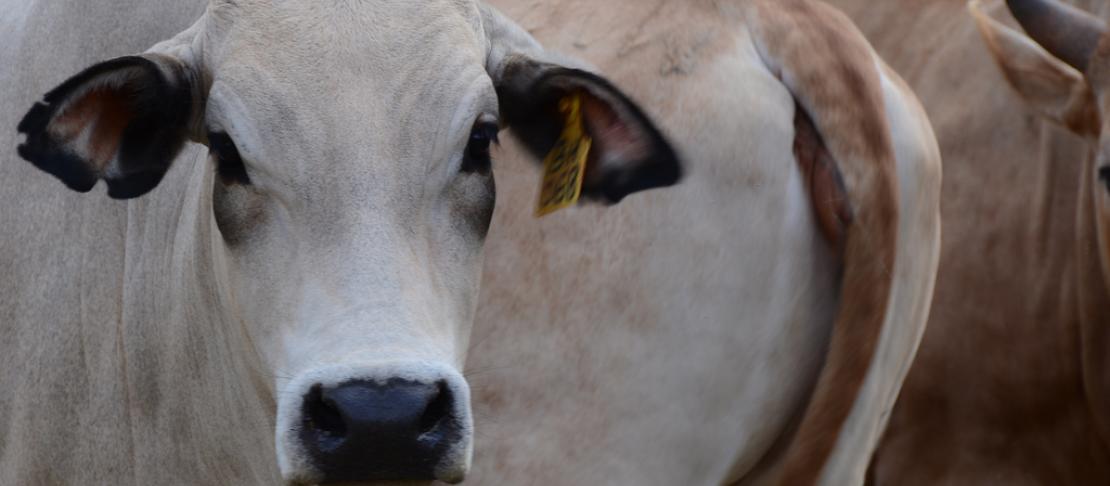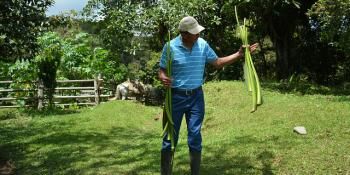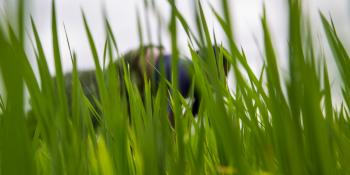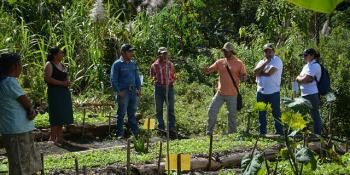Genetic erosion threatens resilience of Ethiopian Boran Cattle

The genetic makeup of the Ethiopian Borana cattle breed is under threat, a recent study has shown.
Borana cattle are undoubtedly the most important indigenous breed in the lowlands of southern Ethiopia for beef and milk production. Among the local cattle populations, the Borana cattle are superior and one of the most suitable cattle breed for arid and semi-arid regions of Ethiopia. As a result of natural and artificial selection, the breed has developed greater ability to survive, grow and reproduce in conditions of high ambient temperature, poor feed quality, water shortage and disease including tick infestations.
A recent study carried out by scientists from Managing Risks for Improved Livelihoods (MARIL) and Oromia Agricultural Research Institute (OARI) in Ethiopia with support from the CGIAR Research Program on Climate Change, Agriculture and Food Security (CCAFS) shows that the genetic makeup of the Ethiopian Borana cattle breed is under threat. The study was conducted in Yabello and Arero districts in the Borana plateau—one of the CCAFS sites in East Africa.
Access CCAFS Site Atlas: Borana/ Yabello in Ethiopia.
The level of admixing observed from survey data and herd level observation and other sources of information show recurrent drought, inter-clan and ethnic conflicts, lack of awareness about inbreeding and selective breeding coupled with pasture deterioration contribute to genetic erosion. Other factors contributing to genetic erosion include restocking programmes by Non-Governmental Organizations (NGOs), emergence of unplanned cultivation together with restricted movement and extension of markets. Diverse indicators of genetic erosion were used and included small animal sizes, low milk yield and mixed colour.
Neglect of traditional livestock production systems arising from commercialization of animal agriculture and change in traditional production systems is threatening the security of most of the indigenous breeds; in addition, drought and civil conflict have reduced localized populations. With the current trend in climate variability and the resultant increase in the frequency of drought and other calamities the Borana breed is coming under threat. Pastoral communities are reporting changes in the phenotypic characteristics of the breed.

molecular characterization of the existing Borana cattle is necessary to know the inbreeding level and to estimate the extent of admixing with the small size zebu breeds. PHOTO: d.white (ILRI)
The study assessed the level of genetic erosion for Borana cattle and the different forms of admix and their relationship with climate variability using various methods. These included participatory approaches to collect information from the older generation as well as the youth. Additional information was collected through a systematic survey that allows for the measurement of genetic erosion and the different forms of admixes in the target sites. Information collected included the causes of loss that result in changes in production and productivity of the Borana cattle and its feature to resist drought and disease; herd characteristics and breed structure; herd size dynamics; reproductive and productive characteristics and cattle breed phenotypic description ( coat pattern, hair length and type, the horn and hump appearance).
The findings show limited use of artificial insemination service, with over 90% of the pastoralists in this study using natural uncontrolled mating, a possible reason for inbreeding. Few households (less than 10%) use natural controlled mating through group mating and, herding the other steers separately. Lack of awareness about selective breeding can contribute to the inbreeding, leading to genetic erosion. Moreover, conflict through cattle raiding contributed to inbreeding as such animals were reared to increase their numbers regardless of their genetic makeup. NGO restocking programme on the other hand contributed to the inbreeding particularly when they fail to reinstate the original breed constitution of the target livestock population, or when community preferences are disregarded. However, the impacts of such re-stocking programmes have not been documented.
Recommendations from the study
Continued natural selection for small sized animals’ due to recurrent droughts is one of the threats facing the genetic identity of indigenous Borana cattle. Breed conservation strategies, therefore, should focus on breaking the cycle of natural disaster, which is a major challenge to the productive animals. Another recommendation is a community based and open nucleus breeding strategy be instituted at community and government research levels together with necessary awareness creations and training in relation to climate change. This will ensure the Borana breed is further developed for sustainable utilization and conservation supported by the molecular level characterization. Lastly, more work is needed on the molecular characterization of the existing Borana cattle to know the inbreeding level and to estimate the extent of admixing with the small size zebu breeds.
Getachew Gebru and Solomon Desta are scientists with Managing Risk for Improved Livelihoods (MARIL) in Ethiopia. Tesfaye Alemu works for the Oromia Agricultural Research Institute
Editing by Vivian Atakos and Maren Radeny of CCAFS, East Africa



